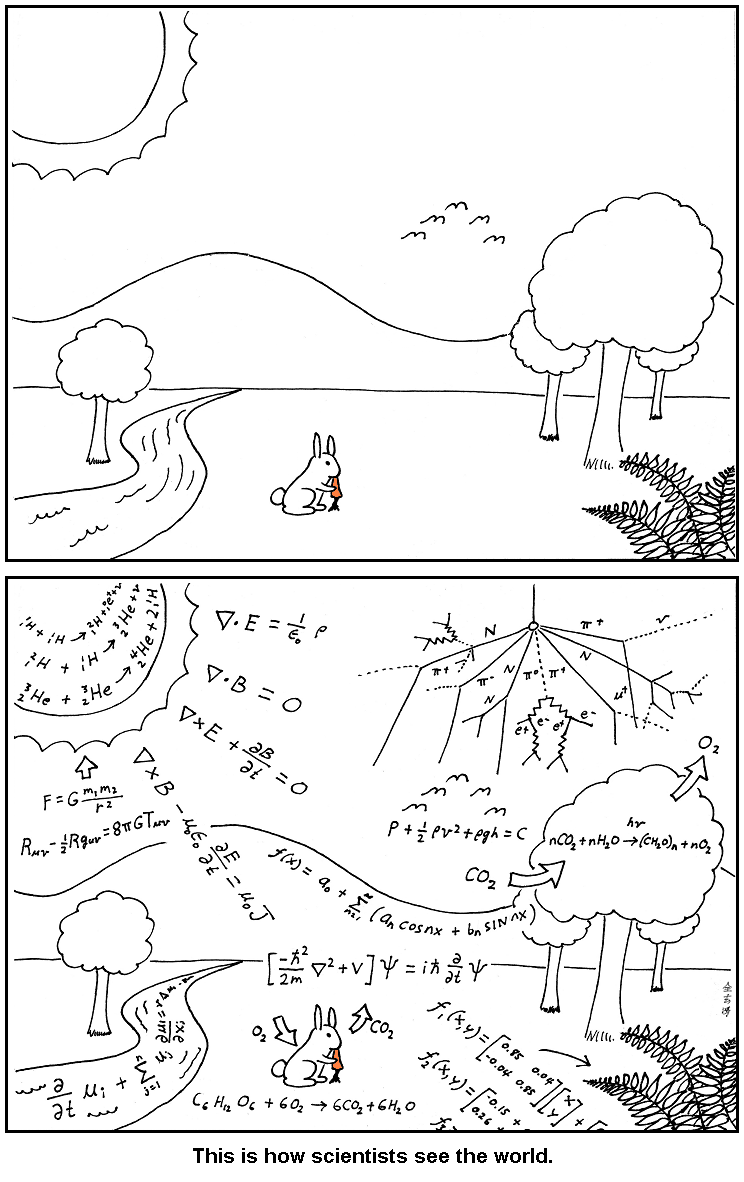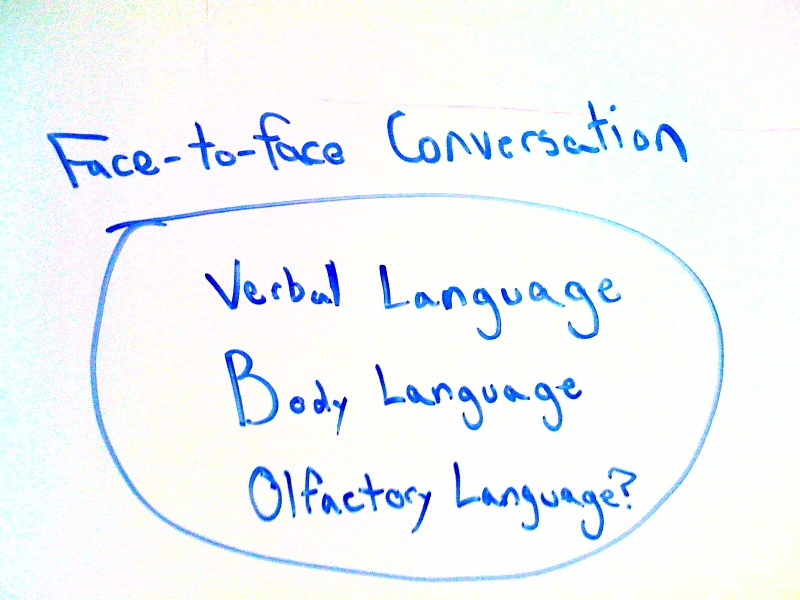Speaking the Same Language
I appreciate Sue Thomas, the preeminent scholar of transliteracy, taking the time to read and respond to my recent post. Her insight, and especially her question, made me realize that I had fallen into the curse of knowledge and had perhaps sacrificed effective communication for the sake of rigor.
So, I’d like to be a bit less formal and start from the top.
Information
The Universe is made up of information. This is particularly interesting in the context of concepts like simulated reality. A computer simulating a Universe to as detailed an extent as the Universe we inhabit would have to account for expressing physical information via digital physics and perhaps would require artificial intelligences for simulated inhabitants.
What’s important here is that the universe is made up of information. That information can then be expressed in ways beyond the literals of existence.
Perception
Information wouldn’t matter much without senses. We as living beings have an ability to perceive reality via our senses. We then do various stuff with this information.
Communication
Communication is “…a process of transferring information from one entity to another.” While it’s interesting to think of objects like stars communicating with us their message of very bright light from very far away, I think communication requires intention on the sender’s part.
A plant of a certain color or emitting a certain scent may be communicating to animals that they do or do not wish to be eaten, but a rock of a certain color probably didn’t go through any sort of process to convey a message to any recipient.
Language
When I think of “raw data,” I visually see a wall of numbers in Notepad on my computer. This, however, is far from raw data (data being used interchangeably with information here). How do we fathom what the pure state of information really is? It’s always expressed in some manner.
The method of expression is language. Languages are systems for encoding and decoding information.
Mixed Signals
As Sue points out, I made no mention of body language in my previous post. She is absolutely correct, and has provided an excellent example of how to effectively wrestle with my proposed redefinition of transliteracy.
Two people engaging in a face- to-face conversation may use three or more different languages. They’d speak verbally, they may gesture or use other body language, and may have intentionally-or-not decided to express information through scent.
What if this face-to-face conversation was flirtatious? The information expressed verbally might be playful and flattering. The body language could be expressed as a visual language of lines, shapes, colors, etc. The olfactory language could be pleasing found scents applied to the body or pheromones secreted involuntarily. There could even be touching. But I’m not writing a romance novel here, so let’s leave this example and move elsewhere.
Someone transliterate in the languages of a face-to-face conversation is able to decode the information encoded and expressed by the sender, then encode and express that information via language (though not necessarily the same language(s) used by the other party). Since the information from one language may conflict with another, it’s important to be able to encode and decode the information in order to interpret it. If I say ‘yes’ verbally but shake my head to indicate ‘no,’ what am I really communicating? This is a basic example of transliteracy.
Language, Not Language
I’m using language explicitly here as systems of encoding and decoding information. Dr. Thomas mentioned other types of languages as examples that aren’t included in that sense. Cultural Language and Sensory Language as I’m interpreting them (though, to be honest, I don’t really understand them) are sets of terminology within a language. This would be like the 6th definition in Princeton’s wordnet listing for language.
If we operate from different definitions of language this communication falls apart, so I’d like to emphasize that I don’t mean language in the sense of terminology.
Units
I contend language is the right unit to use for literacy because it plays well with original definitions of literacy and transliteracy. Since the terminological taxonomy of language is ironically poorly-defined, this is not as of yet an ideal solution.
However, it has an advantage over the current working definition of transliteracy that the base unit of language can be compared and contrasted. Since media, tools, and platforms are disparate things, you cannot express insights across them, which is the entire point of the trans- prefix attached to the word. By having one unit, whether you choose to call it language or ‘medium’ or ‘channel’ or ‘kwyjibo,’ you can then make comparisons.
You can see the comparative ability in the face-to-face conversation example. Different languages are used to express information; sometimes different information in different ways. One person, instead of blushing, could just say “I’m embarrassed.” What strengths and weaknesses do these languages have over one another for expressing information?
More importantly for the sake of argument — how would you comparatively express face-to-face conversation in the context of media, tools, and platforms?
Free Riders
By using language as the base unit, we are also afforded the terminology and theory of linguistics to express and grapple with the communicative concepts. This provides us with an interdisciplinary framework for discussing the implications of transliteracy.
It’s also useful for applying transliteracy in a pedagogical sense. If we want to ensure a learner is equipped to use flickr, we just need to teach them the necessary underlying languages - be they written, visual, interface, or otherwise.
Homework
I encourage you to look at some of the great examples of transliteracy on the transliteracy.com site and consider which languages are at work in each communication. Moreover, consider how you would then teach the necessary literacies such that others could communicate in the same manner.
I hope this post provides a little more clarity into what I mean by language and why it’s a good choice for a base unit of transliteracy. Thank you.

